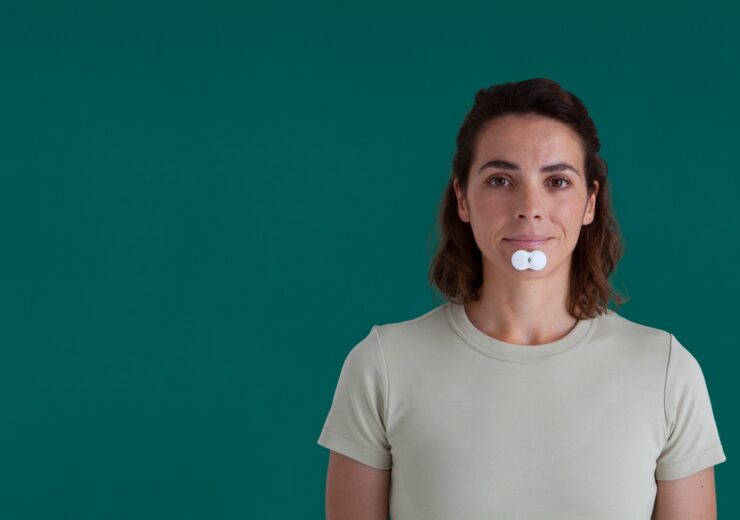The disposable, multi-night test with a single point of contact measures sleeps through the bio-signal of Mandibular Jaw Movements thereby improving the ease of use

The Sunrise device sits near the chin and measures its movements. (Credit: Sunrise)
Sunrise has secured US Food and Drug Administration (FDA) approval for its second-generation at-home sleep apnea test.
The Belgium-based startup has designed this disposable, multi-night test is designed to facilitate the diagnosis of obstructive sleep apnea and sleep-related breathing disorders using artificial intelligence (AI).
Sunrise said that the device measures sleep through the bio-signal of Mandibular Jaw Movements (MJM) from a single point of contact sensor placed on the chin.
The lightweight sensor records the movement of the jaw and sends it to an app. The app then processes the gathered data using an AI-powered algorithm and sends them to healthcare providers via a secure online portal.
According to Laurent Martinot, the CEO and co-founder of the company, the novel device uses the MJM signal and conventional airflow and oximetry signals to provide new clinical information and ease of use for home sleep testing.
Martinot added: “We have clinically validated our sensor against the gold standard of polysomnography on thousands of patients to measure sleep-disordered breathing.”
The Belgian startup said that patients will be able to perform multi-night testing using the device, one of the new features of the at-home sleep apnea test.
UC San Diego Health Pulmonary, Critical Care and Sleep Medicine research chief Atul Malhotra said: “Home sleep tests have come a long way in recent years and are now well established in diagnosing sleep disorders in appropriate patients.
“Despite this success there remain shortcomings and the Sunrise device appears to close some of these gaps in its ability to convey relevant information about hypoxic burden and total sleep time spent with increased respiratory effort, a key component of obstructive sleep apnea that has been linked to cardiovascular and mortality outcomes.”
